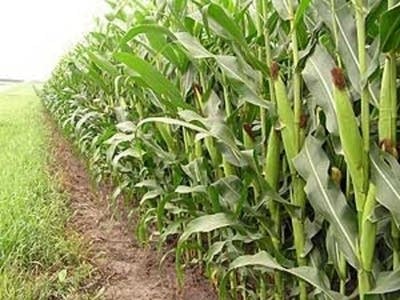Corn crop could hit record, but also depress prices
Go Deeper.
Create an account or log in to save stories.
Like this?
Thanks for liking this story! We have added it to a list of your favorite stories.

Minnesota's corn crop is off to a good start and could contribute to a record U.S. harvest. But uncertainty over prices has farmers wondering if a bountiful harvest might cost them more than they can sell their corn for.
Although it's still very early in the growing season, preliminary indications are that there will be a very big harvest, said Joe Glauber, chief economist for the U.S. Department of Agriculture.
"We're calling for record corn production of almost 14.8 billion bushels," Glauber said.
That would be 13 percent more than the previous record in 2009. Much of the expected increase is linked to the 4 million additional acres of corn farmers planted this year, attracted by the grain's recent high prices.
Turn Up Your Support
MPR News helps you turn down the noise and build shared understanding. Turn up your support for this public resource and keep trusted journalism accessible to all.
But a record crop could cause problems for farmers, Glauber said, as a huge corn supply would drag down the price.
The USDA's estimated average price for corn in the year starting next September is expected to be about $4.60 per bushel, down from about $6 in the current marketing year.

For some farmers, $4.60 a bushel is less than what it takes to grow the crop. They have to buy expensive seed, fertilizer and weed killer. If corn prices fall, that could mean a sharp reduction in profits, which have soared in recent years.
Demand from the ethanol industry and from other countries, mainly China, has pushed the value of corn way up - and with it, farm profits. One survey of about 1,300 Minnesota crop farms showed their average net income was nearly $127,000 annually over the last five years. Too much corn on the market could sink prices and farm income.
But if farmers like southern Minnesota's Michael Wojahn are worried about falling corn prices, they're not showing it.
So far, Wojahn is having such a stress-free spring that he recently took time off from the fields to seed sweet corn in his garden with a nearly century-old hand-operated planter.
"It's a whole lot easier than crawling around on your knees to plant corn," he said.
Wojahn had time to garden because he finished field corn planting in late April, way ahead of schedule.

"The crop is off to a wonderful start as far as I'm concerned," he said.
That quick start has benefitted most of the nation's farmers and it's another reason the USDA is predicting such a big crop.
Early planting generally boosts the size of the final harvest. That's because an early crop usually pollinates before the worst of the summer heat sets in. Too much heat can reduce pollination and shrink the crop.
But even though it appears the stage is set for a price-depressing monster crop, Wojahn said he's not convinced.
"The USDA is making a guess," he said.
The USDA forecast assumes near normal weather across all of the U.S. until harvest. But weather is rarely normal, and there are still drought concerns in Iowa and other points south of Minnesota.
Whatever happens this year, sooner or later overproduction will force corn prices lower, Wells Fargo agricultural economist Michael Swanson said.
"If history is any guide, we will get a down cycle for a two or three or four-year period," he said.
Swanson said farmers should be ready for that eventuality. He said farmers can use the futures market to lock in a profitable price for at least part of this year's crop.
Prices are dropping on the futures market. They're still above break-even, but Swanson said if the USDA's estimate is on the mark, they could fall to unprofitable levels.
"Yeah, we could see those prices, no doubt about it," Swanson said. "But if it happens, the farmer should not complain to anybody because they certainly had the opportunity to sell their grain higher, at an earlier date."
But farmer Michael Wojahn isn't locking in anything.
"I don't have any of my corn pre-sold this year," he said.
Wojahn said in previous years he made more money by waiting until harvest to begin selling, even though there are always risks involved. Living with those trade-offs is a big part of being a farmer.






